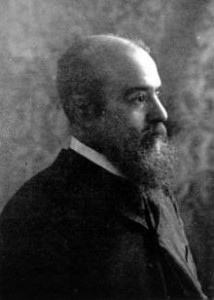Should Lean Marketers be using the Wanamaker Principle or the Pareto Principle in your Customer Retention programs?
John Wanamaker said: “Half the money I spend on advertising is wasted; the trouble is I don’t know which half.” I have written about this on several occasions on how this is a good thing, not a bad thing. In particular, two posts; Deming was just simply wrong about variation… and Why Should 50% of your marketing should fail (statistical proof offered by Don Reinertsen). However, this type of thinking applies mostly to acquisition, not retention. We need a little of the Pareto Principle in retention.
Business-management consultant Joseph M. Juran suggested the principle and named it after Italian economist Vilfredo Pareto. It is a common rule of thumb in business; e.g., “80% of your sales come from 20% of your clients”. Mathematically, where something is shared among a sufficiently large set of participants, there must be a number k between 50 and 100 such that “k% is taken by (100 ? k)% of the participants”. The number k may vary from 50 (in the case of equal distribution, i.e. 100% of the population have equal shares) to nearly 100 (when a tiny number of participants account for almost all of the resource). There is nothing special about the number 80% mathematically, but many real systems have k somewhere around this region of intermediate imbalance in distribution.
Why is this important in retention? It is that number, the people that you are presently retaining that will be the key in developing a retention program.
Wannamaker Customer Retention Program:
Typically, most marketers will design a retention program by establishing a variety of listening posts. We develop campaigns for follow-up that incorporate survey, telephone solicitation, focus groups, etc. With the advent of social media and new technology; it seems that we can be everywhere and at any time. We open the flood gates to this sea of data and here it comes. The information and data collected is bountiful and never ending. In fact, we have created entire industries and threatened to be overwhelmed by big data.
The data flows but much of the feedback is negative. It is pretty common, since the unhappy customer is willing to make the effort to tell someone about it. Only your mother and maybe a few other relatives are ready to expound the virtues of working with you. The continuous improvement people are overjoyed. This is a good thing. We start finding all the problems and now we can correct them. Or, so it seems.
Pareto Customer Retention Program:
In your first efforts, 80% of the people responding will be negative. You must develop a recovery program to handle these instances and improve your ability to respond but in the beginning you will stand little chance of accomplishing both a good response and as a result a customer whom you can retain.
Don’t take this the wrong way and think I am advocating not correcting problems. But this is not necessarily a good thing to improve and create an on-going retention program. What your customer retention program must concentrate on is the 20% positive responses. This is our strength. The first steps of any Lean process are identifying value and creating a current state. Why should we identify the process through Non-Value Activities defined as waste (Weaknesses and Threats) versus value added activities? I use the appreciative inquiry approach of a SOAR framework as the beginning step in the Defining stage and a natural lead in to the other steps.
- Strengths: Internal to organization; What is our core?
- Opportunities: External to organization; What might be?
- Aspirations: Internal to organization; What should be?
- Results: External to organization; What will be?
We continue with the five steps of appreciative inquiry:
- (Definition) What are we presently doing and how do customers feel about them?
- (Discovery) What is our present value proposition for the customers we are retaining
- (Dream)What are our targets for improving? How will we measure success?
- (Design) How do these experiences differ? How do the customers differ?
- (Destiny) What’s our investment strategy – not only in media, but in time and events?
By creating our customer retention program from a position of strength, we accomplish those early successes and celebrations so much needed for jump-starting a program. Do we end up forgetting about the problems? Of course not, what we do is by concentrating on the vital few, we create a much more manageable program at the beginning and something we can deliver on. It matches our capabilities. When the program expands, it attracts more customers into our strength versus growing in a random manner. As Dr. Juran might say, it is the vital few not the useful many.
Related Book: The Thin Book of SOAR; Building Strengths-Based Strategy
Related Information:
Using Desired Effects to find Root Cause
Lean Marketers concentrate on SOAR vs. SWOT
Appreciative Inquiry instead of Problem Solving


Comments are closed.